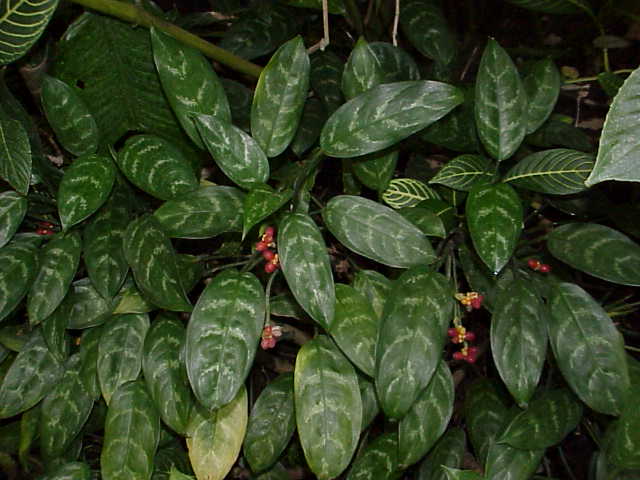During our childhood, we were taught that plants could not live without the Sun as its their primary source of energy and the one responsible for allowing them to undergo photosynthesis or their food-making process.
The truth is, you can grow a ton of indoor plants that are low maintenance, not requiring a consistent supply of sunlight, and some even do better in shady or dark rooms. If you’re just new to being a plant parent, you can start with these low-light plant varieties.
Here is a list of the indoor plants that thrive in the dark sections of your place, whether in your house or office.
Aglaonema
With striking variegated leaves in shades of red, pink, yellow, and green, the Aglaonema or the Chinese evergreen is one of the most favorite darkroom plants. It is tolerant to low-light and is also drought tolerant. You don’t need to be a green thumb gardener to grow this kind of indoor plant. This plant is up to 3 ft tall, and you can place this indoor where you want to add a little color to a dull room or a space that needs some color, and you won’t have any need for flowers.
Anthurium
Also known as Laceleaf, flamingo flower, tailflower, Anthurium is a dark room plant with bold, red, pink, orange, white, or purple flowers come from a genus of about 1000 species of flowering plants. Anthurium became famous among international florists as an extraordinary part of decoration-making bouquets.
They are a welcome treat during the dark days of winter. This tropical plant likes slightly moist soil at all times so, keep on watering them with just the right amount. Although they bloom best in bright, indirect light, they also thrive in darker situations and limited flowering. However, its bright green color makes it a stand out darkroom beauty despite the absence of flowers.
Arrowhead Vine
The Syngonium podophyllum is native to Central America. Some familiar names include arrowhead plant, arrowhead philodendron, arrowhead vine, goosefoot, African evergreen, and American evergreen. This vine plant indoors can survive in a wide range of low-light conditions. It has leaves that can be bright green, bronze, or variegated. At an early stage, this dark place plant forms a bushy mound, yet, over time, it starts to vine, which makes them ideal for hanging baskets or totem. You can trim or pinch them when they begin to get too leggy.
Begonia
There are over 1000 species and numerous varieties and hybrids of this plant that is native to moist subtropical and tropical climates. Begonia comes in countless colors, sizes, and shapes, but there are four main types: fibrous, tuberous, canes, and rhizomatous. Rex Begonia is one of the best growing types that features multicolored leaves in a collection of silver, green, pink, red, orange, and burgundy. Since it only grows a few inches tall, some gardeners use them in terrariums or dish gardens.
Boston Fern
Nephrolepis exaltata, sword fern, or Boston fern is native to tropical regions worldwide. It was discovered in the late 1800s. This plant typically reaches as high as 40–90 centimeters and thrives in shady outdoor and indoor locations away from cold drafts or heat ducts. As a fern, it loves humidity, so mist often during the winter to minimize leaf drop.
Columnea
This jungle native plant develops tubular orange or yellow blooms that’s why it’s called a goldfish plant. Columnea is native to tropical America and the Caribbean region. It blooms best in sunny locations, but it can also flourish in darker rooms. It makes a beautiful basket plant due to its trailing, shiny, dark green leaves.
Chlorophytum comosum
This is also called Spider plants, which prefer low light and do not require much attention other than occasional watering when the soil becomes dry. They send out long thin leaves and small white flowers that cascade down the edge of their container.
Cast Iron Plant
Aspidistra elatior, thrives on neglect and lives happily in dark places, so you need not do constant monitor when growing this indoors. Also, you don’t need repotting as this rugged plant spreads slowly. Cast iron plant bears dark green and narrow leaves.
Dracaena fragrans
Also called a corn plant, Dracaena fragrans is another low-maintenance houseplant that resembles small tropical palms. Place this indoor where the location doesn’t get any direct sunlight and water occasionally. Ensure that you don’t overwater it. For this plant to look best, remove any faded leaves as they appear.
Dieffenbachia
This lovely tropical plant features a wide range of speckled or blotched in either yellow-and-green or white-and-green leaves. They much prefer bright indirect sunlight to grow excellently, but they too thrive in dark rooms. Keep it out of reach of children and pets as it is poisonous.
English Ivy
Hedera helix, commonly known as ivy, English ivy, or European ivy, is a perfect indoor plant for hanging baskets because of its trailing foliage. This indoor plant features various leaf colors and shapes and thrives in low light. You can place this in a cool, north-facing windowsill.
Hoya
It has about 200-300 species native to Asian countries such as the Philippines, India, Thailand, Malaysia, Indonesia, and a wide variety of species could also be found in Australia.
Hoya or wax plant is a gorgeous slow-growing plant that thrives in bright indirect light but does almost as well in darker locations. It has either flat-leaved or crinkled- leaved forms and will occasionally produce highly fragrant white flowers clusters. Hoya can be trained up a trellis or totem or allow it to trail over the edge of a pot or urn.
Check this Guide to Displaying Your Indoor Plants to help you decide which group of dark room plants can go together in one area to add beauty and light to your dull room or workspace.

